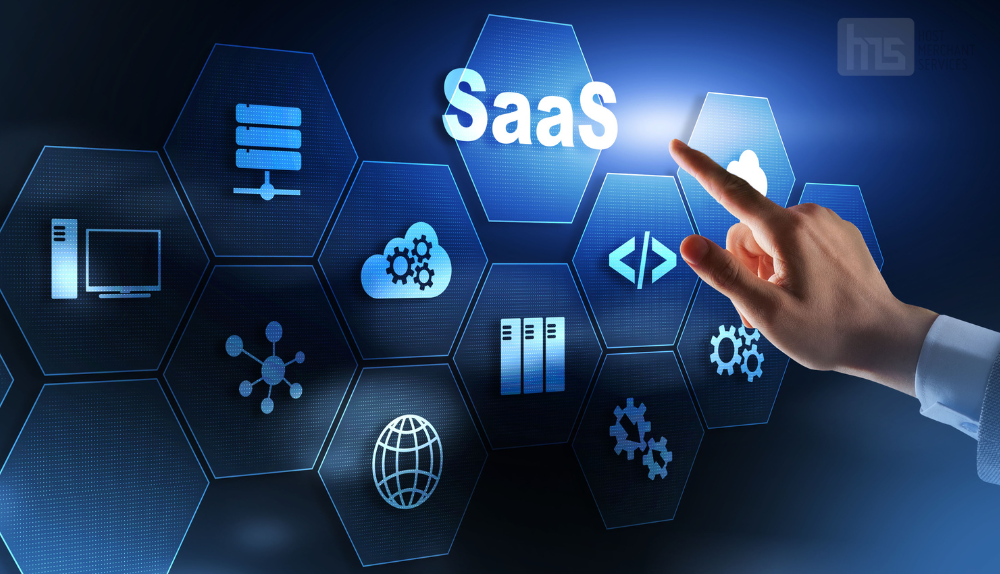Customer service plays a vital role in the success of a Software as a Service company. In a highly competitive market, exceptional customer service can be a key differentiator that sets a company apart. It contributes to customer satisfaction, retention, and advocacy, leading to increased revenue and growth. However, it’s equally important to control customer service costs to ensure profitability and operational efficiency. By effectively managing costs without compromising on service quality, SaaS companies can optimize their resources and maximize their bottom line. In this article, we will explore the best strategies and practices to control customer service costs in SaaS companies, enabling them to deliver outstanding support while maintaining financial stability.
Analyzing Customer Service Costs in SaaS Companies
To effectively control customer service costs in SaaS companies, it is important to first understand the components that contribute to these expenses. By identifying the key cost factors, companies can implement targeted strategies for cost optimization. Here are the main components of customer service costs in SaaS companies:
- Staffing and personnel expenses: The largest portion of customer service costs is typically allocated to staffing and personnel. This includes salaries, benefits, and other related expenses for customer service representatives, managers, and support staff. Efficient staffing levels and proper workforce management are crucial in optimizing these costs.
- Technology and software tools: SaaS companies heavily rely on technology and software tools to manage customer service operations. This includes help desk systems, ticketing software, live chat platforms, CRM systems, and other customer support applications. Costs associated with licensing, maintenance, upgrades, and integration of these tools need to be carefully managed.
- Training and development: Investing in comprehensive training programs for customer service staff is essential to ensure they have the necessary skills and knowledge to assist customers effectively. Training costs include curriculum development, trainers’ salaries, training materials, and ongoing skill enhancement programs.
- Communication channels and infrastructure: Customer service teams rely on various communication channels to interact with customers, such as phone support, email, live chat, social media, and self-service portals. The costs associated with maintaining these channels, including phone systems, internet services, hosting platforms, and infrastructure maintenance, contribute to overall customer service expenses.
Strategies for Cost-Effective Customer Service in SaaS Companies

To reduce customer service costs without compromising quality, SaaS companies can implement several strategies that focus on enhancing self-service options, optimizing onboarding processes, leveraging automation, utilizing customer data and analytics, implementing a tiered support structure, and encouraging customer self-service and peer support. Here are the key strategies:
Enhancing self-service options:
- Implementing a comprehensive knowledge base: Develop a robust knowledge base that provides detailed articles, guides, and tutorials to address common customer queries. Ensure it is regularly updated and easily accessible.
- Creating video tutorials and guides: Supplement written resources with video tutorials to enhance the learning experience for customers. Visual content can help users understand complex features or processes more effectively.
- Offering interactive FAQs and troubleshooting resources: Provide interactive frequently asked questions (FAQs) and troubleshooting resources that allow customers to find solutions independently. Utilize search functionalities and intuitive navigation to facilitate easy access to relevant information.
Optimizing customer onboarding:
- Streamlining the onboarding process: Simplify and streamline the customer onboarding journey to reduce the need for extensive hand-holding. Identify potential bottlenecks and eliminate unnecessary steps to make the onboarding process more efficient.
- Automating onboarding tasks: Automate repetitive onboarding tasks such as user account setup, data migration, and system configurations. Use workflow automation tools to streamline the process and minimize manual effort.
- Providing self-guided tours and walkthroughs: Offer self-guided tours and interactive walkthroughs within the software interface to help users explore key features and functionalities at their own pace. This reduces the reliance on direct support and enables users to become proficient with the software independently.
Implementing intelligent chatbots and virtual assistants:
- Integrating chatbot technology for basic inquiries: Utilize chatbot technology to handle routine and frequently asked questions. Chatbots can provide instant responses, freeing up human agents’ time for more complex queries.
- Utilizing natural language processing for improved interactions: Implement natural language processing capabilities in chatbots to enhance their understanding and response accuracy. This enables more conversational interactions with customers, improving the overall user experience.
- Ensuring seamless handoffs to human agents when necessary: Design chatbots to seamlessly transfer conversations to human agents when complex issues arise or when customers explicitly request human assistance. This ensures a smooth transition and maintains a high level of customer support.
Leveraging customer data and analytics:
- Utilizing customer insights to identify common issues: Analyze customer support data and feedback to identify recurring issues or pain points. This helps prioritize improvements in product features, user documentation, and self-service resources.
- Proactively addressing customer needs based on data analysis: Use customer data to anticipate and address potential issues before they arise. Proactive communication, targeted notifications, and personalized recommendations can help prevent support inquiries and enhance customer satisfaction.
- Identifying trends and patterns to optimize support processes: Analyze support metrics and patterns to identify opportunities for process optimization. By understanding peak support hours, frequently requested features or common support requests, companies can allocate resources more effectively and streamline support workflows.
Implementing a tiered support structure:
- Assigning experienced agents for complex cases: Create a tiered support structure where senior agents handle complex and specialized issues. This ensures that high-value customers receive the necessary expertise and reduces the need for escalations.
- Training junior agents for basic support tasks: Train junior agents to handle routine support tasks and frequently encountered issues. This enables more efficient utilization of resources while providing valuable learning opportunities for junior team members.
- Creating escalation pathways for timely issue resolution: Establish clear escalation pathways to ensure prompt resolution of escalated cases. Clearly define when and how issues should be escalated to higher-level support, avoiding unnecessary delays or miscommunication.
Encouraging customer self-service and peer support:
- Building a community forum or knowledge-sharing platform: Create an online community forum or platform where customers can ask questions, share insights, and help each other. This not only fosters self-service but also cultivates a sense of community and customer loyalty.
- Encouraging customers to help each other through discussions: Actively encourage customers to engage in discussions and provide assistance to fellow users. Recognize and promote valuable contributions to incentivize participation and knowledge sharing.
- Recognizing and rewarding active community participants: Acknowledge and reward customers who actively contribute to the community and provide valuable support to their peers. This can be done through badges, recognition programs, or exclusive benefits.
Technologies and Tools for Cost-Effective Customer Service

SaaS companies can leverage various technologies and tools to streamline customer service operations and achieve cost-effectiveness. Here are some key technologies and tools that contribute to cost-effective customer service:
Customer relationship management (CRM) systems
CRM systems provide a centralized platform to manage customer interactions, track support tickets, and maintain customer data. By organizing and automating customer-related processes, CRM systems enable efficient customer service operations, improved customer satisfaction, and reduced costs associated with manual data management.
Help desk software
Help desk software facilitates ticket management, customer communication, and issue tracking. It allows customer service teams to efficiently handle incoming support inquiries, assign and prioritize tickets, and maintain a record of customer interactions. Help desk software streamlines workflows, reduces response times, and enhances team collaboration, leading to cost savings in support operations.
Knowledge base platforms
Knowledge-based platforms provide a repository of self-help resources, such as articles, FAQs, and tutorials, accessible to customers. By offering comprehensive and easily searchable documentation, knowledge bases empower customers to find answers independently, reducing the need for human support. This reduces support costs and enables 24/7 self-service support.
Chatbot and virtual assistant solutions:
Chatbots and virtual assistants utilize artificial intelligence (AI) to interact with customers and provide automated support. They can handle basic inquiries, offer instant responses, and guide users through simple processes. By automating routine tasks and reducing the workload on human agents, chatbots and virtual assistants improve efficiency, lower support costs, and provide round-the-clock assistance.
Data analytics and reporting tools
Data analytics and reporting tools enable SaaS companies to gain insights from customer data and support metrics. By analyzing customer behavior, support trends, and performance metrics, companies can identify areas for improvement, optimize support processes, and allocate resources more effectively. Data-driven decision-making improves operational efficiency, enhances customer satisfaction, and ultimately reduces support costs.
Key Considerations for Cost-Effective Customer Service

When aiming for cost-effective customer service in SaaS companies, it’s essential to consider certain factors that contribute to both efficiency and customer satisfaction. Here are key considerations to keep in mind:
Balancing automation and human touch
Finding the right balance between automation and the human touch is crucial. While automation can reduce costs and streamline processes, it’s important to recognize when human intervention is necessary for complex or sensitive customer issues. Striking the right balance ensures efficient operations while maintaining personalized and empathetic customer interactions.
Continuous monitoring and improvement
Customer service processes should be continuously monitored and improved. Regularly evaluate support metrics, response times, customer satisfaction scores, and feedback to identify areas for enhancement. Implementing feedback loops and conducting periodic reviews allow for ongoing optimization, ensuring cost-effectiveness and high-quality customer experiences.
Investing in employee training and development
Investing in the training and development of customer service employees is vital for cost-effective customer service. Well-trained agents are more efficient, can handle a broader range of inquiries, and provide better service. Ongoing training programs enable agents to stay updated on product knowledge, communication skills, and problem-solving techniques, resulting in improved productivity, reduced escalations, and enhanced customer satisfaction.
Prioritizing customer feedback and satisfaction
Customer feedback serves as a valuable resource for identifying areas of improvement and cost reduction. Actively seek customer feedback through surveys, reviews, and support interactions. Analyze feedback to identify recurring issues, pain points, and opportunities to optimize processes. Prioritize customer satisfaction and use feedback as a catalyst for continuous improvement efforts.
Case Studies: Successful Cost Control in SaaS Customer Service
HubSpot
HubSpot is a leading provider of marketing and sales software. In 2015, the company implemented several cost-effective strategies to improve its customer support. These included:
- Automating routine tasks: HubSpot used a variety of automation tools to automate routine tasks, such as ticket creation and assignment, knowledge base updates, and email responses. This freed up customer support agents to focus on more complex issues.
- Providing self-service resources: HubSpot created a comprehensive self-service portal that includes a knowledge base, FAQs, and video tutorials. This allows customers to find answers to their questions without having to contact customer support.
- Using a tiered support model: HubSpot offers a tiered support model that provides different levels of service to different types of customers. This allows the company to allocate resources more efficiently and reduce costs.
As a result of these initiatives, HubSpot was able to reduce its customer support costs by 20% while improving customer satisfaction.
Zendesk
Zendesk is another leading provider of customer support software. In 2016, the company launched a new initiative called “Zendesk Support Suite.” This suite of products and services is designed to help businesses improve their customer support operations while reducing costs.
- One of the key features of Zendesk Support Suite is its “self-service hub.” This hub provides customers with a variety of resources, including a knowledge base, FAQs, and live chat. This allows customers to find answers to their questions without having to contact customer support.
- Zendesk Support Suite also includes several automation tools that can help businesses reduce the amount of time and effort they spend on customer support. For example, the suite includes a tool that can automatically create and assign tickets, as well as a tool that can automatically send out email notifications.
As a result of these initiatives, Zendesk has been able to help businesses reduce their customer support costs by an average of 25%.
Outcomes and Benefits
The outcomes and benefits of these cost-effective strategies include:
- Reduced customer support costs: By automating routine tasks and providing self-service resources, businesses can reduce the amount of time and effort they spend on customer support. This can lead to significant cost savings.
- Improved customer satisfaction: By providing customers with the resources they need to resolve their own issues, businesses can improve customer satisfaction. This can lead to increased customer loyalty and retention.
- Increased productivity:By freeing up customer support agents to focus on more complex issues, businesses can improve productivity. This can lead to faster resolution of customer issues and improved customer experience.
Bottom Line
Implementing effective cost-control measures in customer service is vital for SaaS companies. By optimizing self-service options, leveraging automation, utilizing data analytics, and prioritizing efficient processes, companies can reduce support costs while maintaining customer satisfaction. Investing in employee training and balancing automation with the human touch are key considerations. By adopting these strategies, SaaS companies can achieve cost-effective customer service, drive profitability, and thrive in the competitive SaaS market.
Start Your Free Trial Today!
Find out how easy it is to improve your customer support and save time for FREE!